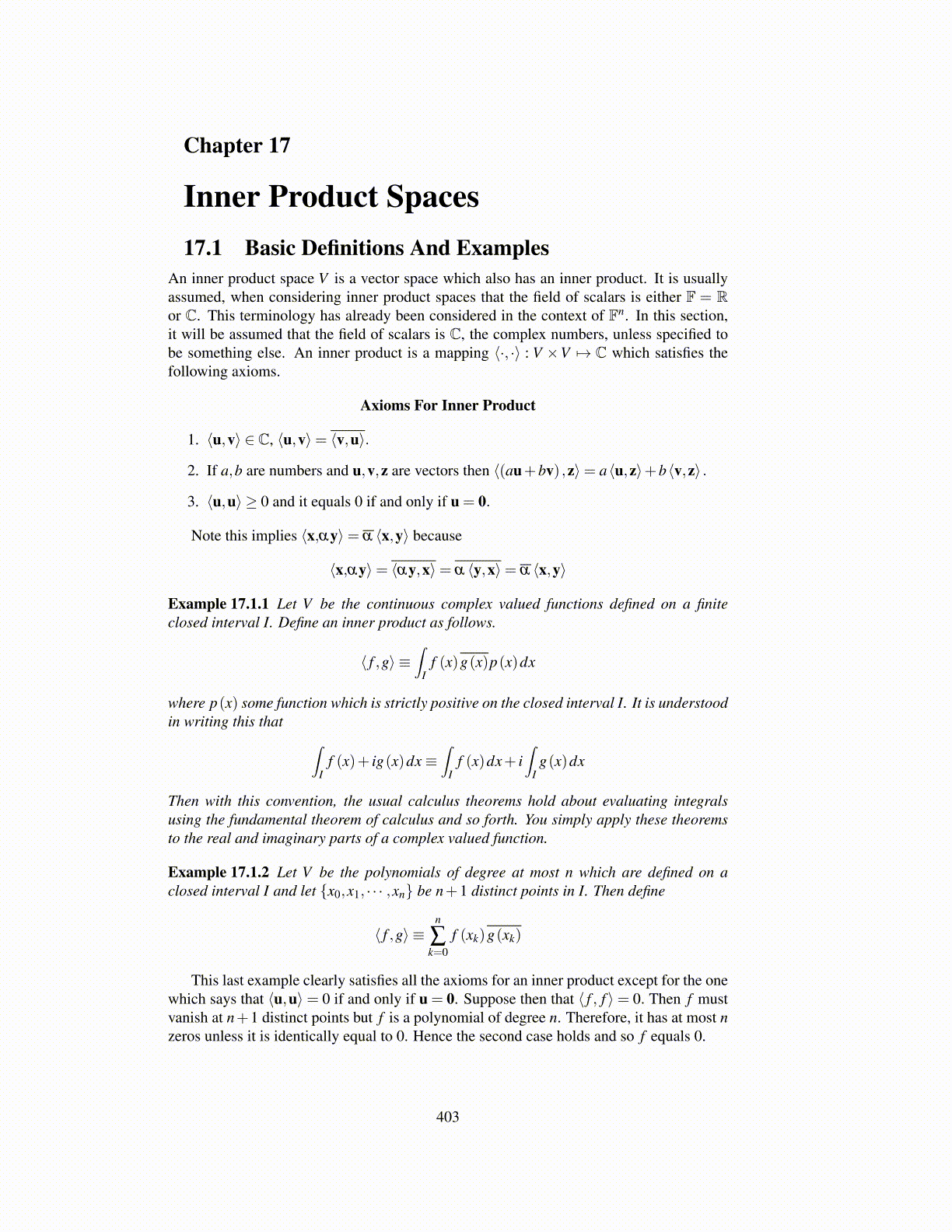
Chapter 17
Inner Product Spaces17.1 Basic Definitions And Examples
An inner product space V is a vector space which also has an inner product. It is usuallyassumed, when considering inner product spaces that the field of scalars is either F = Ror C. This terminology has already been considered in the context of Fn. In this section,it will be assumed that the field of scalars is C, the complex numbers, unless specified tobe something else. An inner product is a mapping ⟨·, ·⟩ : V ×V 7→ C which satisfies thefollowing axioms.
Axioms For Inner Product
1. ⟨u,v⟩ ∈ C, ⟨u,v⟩= ⟨v,u⟩.
2. If a,b are numbers and u,v,z are vectors then ⟨(au+bv) ,z⟩= a⟨u,z⟩+b⟨v,z⟩ .
3. ⟨u,u⟩ ≥ 0 and it equals 0 if and only if u = 0.
Note this implies ⟨x,αy⟩= α ⟨x,y⟩ because
⟨x,αy⟩= ⟨αy,x⟩= α ⟨y,x⟩= α ⟨x,y⟩
Example 17.1.1 Let V be the continuous complex valued functions defined on a finiteclosed interval I. Define an inner product as follows.
⟨ f ,g⟩ ≡∫
If (x)g(x)p(x)dx
where p(x) some function which is strictly positive on the closed interval I. It is understoodin writing this that ∫
If (x)+ ig(x)dx≡
∫I
f (x)dx+ i∫
Ig(x)dx
Then with this convention, the usual calculus theorems hold about evaluating integralsusing the fundamental theorem of calculus and so forth. You simply apply these theoremsto the real and imaginary parts of a complex valued function.
Example 17.1.2 Let V be the polynomials of degree at most n which are defined on aclosed interval I and let {x0,x1, · · · ,xn} be n+1 distinct points in I. Then define
⟨ f ,g⟩ ≡n
∑k=0
f (xk)g(xk)
This last example clearly satisfies all the axioms for an inner product except for the onewhich says that ⟨u,u⟩= 0 if and only if u = 0. Suppose then that ⟨ f , f ⟩= 0. Then f mustvanish at n+1 distinct points but f is a polynomial of degree n. Therefore, it has at most nzeros unless it is identically equal to 0. Hence the second case holds and so f equals 0.
403